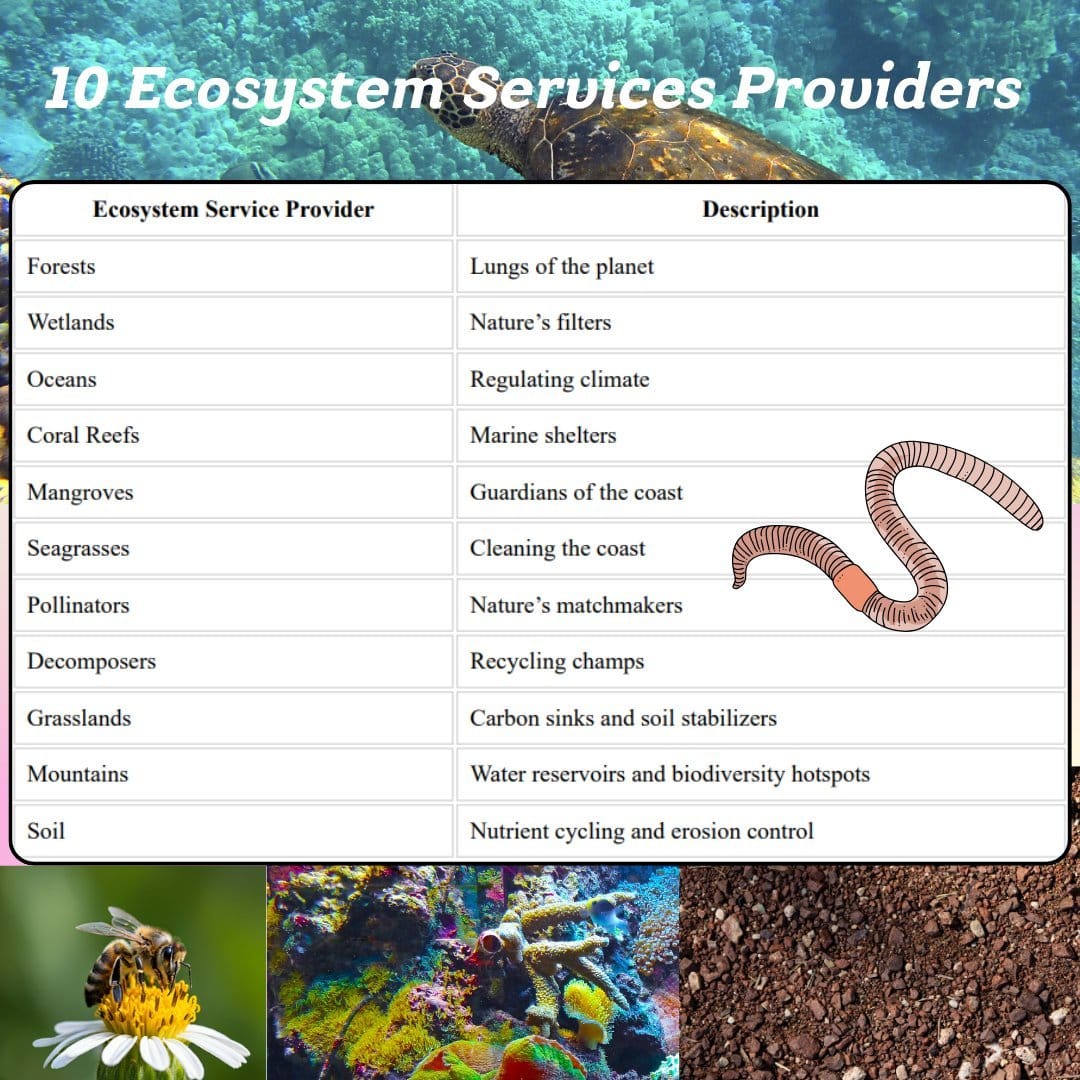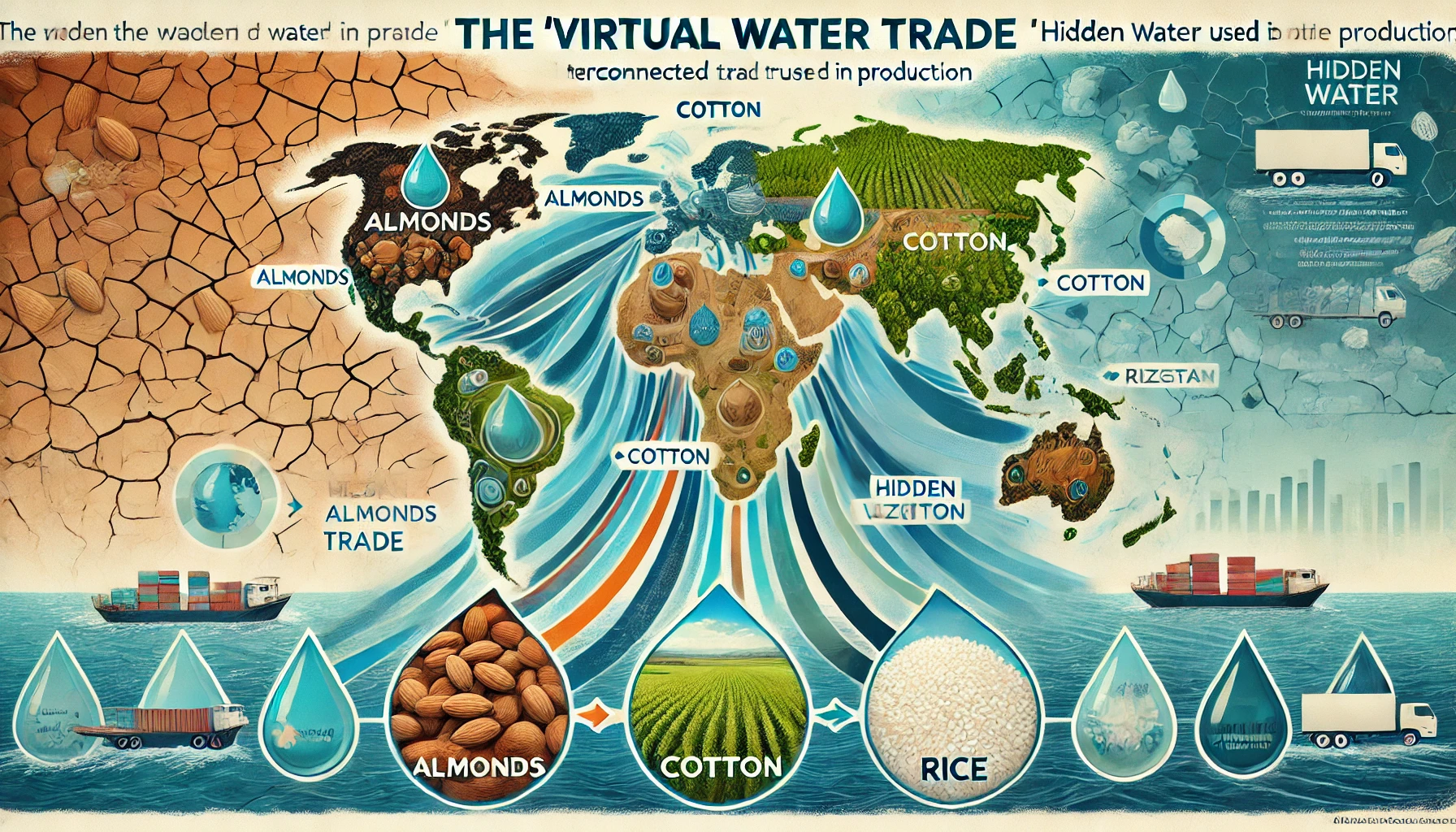Ecosystem services are the benefits people obtain from ecosystems. These services are essential for human well-being and economic prosperity. Key ecosystem service providers play crucial roles in maintaining these services. Here are some of the key players:
1. Plants & Trees
- Photosynthesis: Converts sunlight into energy, producing oxygen and absorbing carbon dioxide.
- Soil Formation and Retention: Roots stabilize soil, preventing erosion and nutrient loss.
- Water Purification: Filters water, removing pollutants and excess nutrients.
- Climate Regulation: Absorbs carbon dioxide, moderates temperature, and influences rainfall patterns.
- Erosion Control: Stabilize land, particularly in forests and mountainous areas.
- Urban Cooling: In urban settings, trees reduce temperatures and improve air quality, enhancing human comfort and health.
2. Microorganisms
- Decomposition: Break down organic matter, recycling nutrients back into the ecosystem.
- Nutrient Cycling: Convert nutrients into forms usable by plants.
- Soil Fertility: Enhance soil quality and fertility.
- Disease Control: Regulate populations of harmful organisms.
- Water Filtration: Species like mussels and freshwater plants help filter pollutants, maintaining water quality in rivers and lakes.
- Food Sources: Form the base of food chains, supporting both wildlife and human activities.
3. Insects
- Pollination and Seed Dispersal: Transfer pollen between plants, enabling reproduction.
- Pest Control: Prey on other insects, helping to control populations.
- Decomposition: Break down organic matter.
- Soil Health: Contribute to soil formation and nutrient cycling.
4. Animals
- Predation: Regulate prey populations, maintaining ecosystem balance.
- Seed Dispersal: Transport seeds to new locations, aiding in plant reproduction.
- Nutrient Cycling: Excrete waste products that fertilize soil.
- Ecosystem Engineers: Modify habitats, creating new niches for other organisms.
5. Fungi
- Decomposition: Break down organic matter, releasing nutrients.
- Mycorrhizal Associations: Form symbiotic relationships with plants, improving nutrient uptake.
- Food Source: Provide food for many organisms.
- Antimicrobial Compounds: Produce compounds that inhibit the growth of harmful microorganisms.
6. Marine Organisms
- Carbon Sequestration: Marine organisms, such as phytoplankton and seaweeds, absorb carbon dioxide from the atmosphere.
- Oxygen Production: Photosynthetic marine organisms produce oxygen.
- Nutrient Cycling: Contribute to nutrient cycling in marine ecosystems.
- Food Webs: Form the basis of marine food webs, supporting fisheries and other human activities.
Summary:

The intricate interplay between these organisms ensures the health and functioning of ecosystems. By understanding and valuing these services, we can work to protect and restore ecosystems for future generations.



